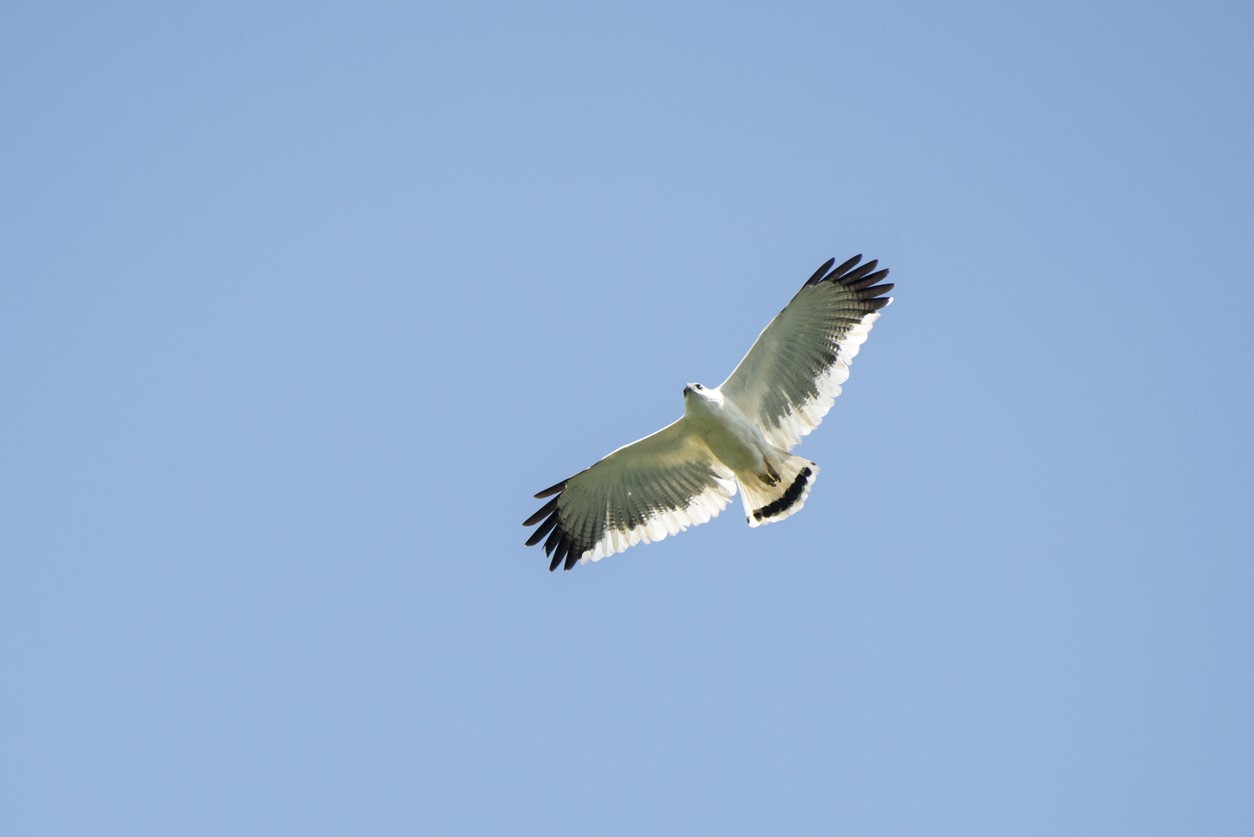White Hawk
A species of Orange-footed Hawks Scientific name : Pseudastur albicollis Genus : Orange-footed Hawks
White Hawk, A species of Orange-footed Hawks
Botanical name: Pseudastur albicollis
Genus: Orange-footed Hawks
Content
Description General Info

Description
The adult white hawk ranges from 46–56 cm (18–22 in) long with very broad wings and has a white head, body and underwings. The upper wings are black, and the very short tail is black with a broad white band. The bill is black and the legs are yellow. The sexes are similar, but females are larger and heavier—840 g (1.85 lb) compared to the male's 650 g (1.43 lb). Immature birds have extensive black spotting on the upperparts and dark-streaked whitish underparts. The call of the white hawk is a plaintive kerwee. 
Size
51 cm
General Info
Distribution Area
This is a bird of lowland forest and other woodlands. It ranges from southern Mexico through Central and South America to Peru, Bolivia and Brazil. It also breeds on Trinidad. The white hawk's range in central South America is the entire Amazon basin, from the Andes on the west to the Guianas on the Atlantic on the northeast, and to the transition lands to the south. A widespread species, it is usually not common, but the IUCN considers it not to be globally threatened due to the large extent of its range. The white hawk feeds mainly on reptiles with some insects and mammals, caught in a sortie from a perch. It associates with foraging groups of tufted capuchin monkeys (Cebus apella) and South American coatis (Nasua nasua) to snatch prey startled by these animals. This species is often seen soaring, and has a spectacular aerial courtship display. It builds a large stick platform nest in a tree and usually lays one dark-blotched blue-white egg. An attended nest was observed in Ecuador in mid-August. 

